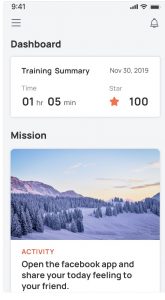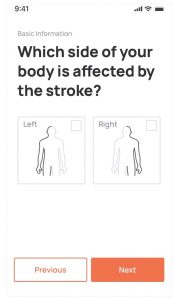Neofect
Neofect Connect


Given recent circumstances surrounding the outbreak of COVID-19, telehealth has become an increasingly important tool for the healthcare community. The government and many private insurers have relaxed regulations and policies for providing at-home care. In response to these changes and patient needs, Neofect is expanding the scope of its at-home support to ensure patients continue receiving the rehabilitation they need from the safety of their homes.
Over the last decade, Neofect has consistently factored patient feedback into its design process and product planning. By putting the patient experience first, Neofect is able to pinpoint where additional attention is necessary. As a result, the company has worked to address the desire for stronger patient support by developing an app that provides daily on-the-go therapeutic exercise and functional activity training for stroke survivors.
Combining extensive medical knowledge with the accessibility of the patient’s phone, Neofect’s new Connect app is a resource designed to guide, coach, and encourage patients through their rehabilitation. The app’s content includes recommended educational reading, neuroplasticity-focused exercises, and functional activity training tailored to the individual’s condition. During the initial set up, the Connect app asks questions to evaluate the patient’s abilities and recommend targeted activities and materials to aid in recovery. Users receive daily customized rehabilitation activities shared directly to their phone that were created by skilled therapists. These reminders encourage patients to put the work in for recovery.
Neofect Connect is completely accessible from the patient’s phone, meaning they can take their therapy wherever they go. One of the biggest challenges with neurorehabilitation is that while intensity of repetitive therapeutic exercise and activities is what leads to improvements, patients have a difficult time with compliance. This app makes it easier to engage patients.What sets Neofect Connect apart is its focus on function and activities of daily living. Every exercise and activity has been carefully selected for an individual’s needs in order to improve body function and — more importantly — increase independence.
In addition, to encourage patients on their rehabilitation journey, Neofect created instructional videos where therapists guide patients through real-life skills such as putting on a jacket, opening a water bottle, and charging their phone. Each video is designed to help patients find what works best for them after experiencing a stroke. The videos can be found via the app as well as on YouTube.
Offered in the Apple Store and the Google Play Store, Neofect Connect increases accessibility of rehabilitation for patients worldwide; at home, on-the-go, or in a clinical setting. Using a patient-first approach, the content provided in Neofect Connect focuses on what matters most for patient success and an overall improved quality of life.
About Neofect
Neofect creates customized digital rehabilitation solutions for patients recovering from stroke, cerebral palsy, Multiple Sclerosis, Lou Gehrig’s disease, and dementia. For this population, repetition is key to their successful recovery, but that doesn’t mean it can’t be fun. That’s why each Neofect rehabilitation solution uses gamified therapy training to invigorate the muscles and stimulate the senses, reinforcing cognitive function and accelerating neuroplasticity (the brain-body connection). This technology allows patients to engage in games backed by physical and occupational therapists.
With gamified rehabilitation solutions, Neofect aims to move patients farther from outdated, traditional rehabilitation. By digitizing rehabilitation and moving therapy into the 21st century, patients are able to access their progress in real-time and have more fun in their recovery. Providing patients with measurable results and comprehensive data isn’t typical in rehabilitation, but it allows for more transparent conversations with therapists and progress in line with patient goals. And it’s a game changer.

